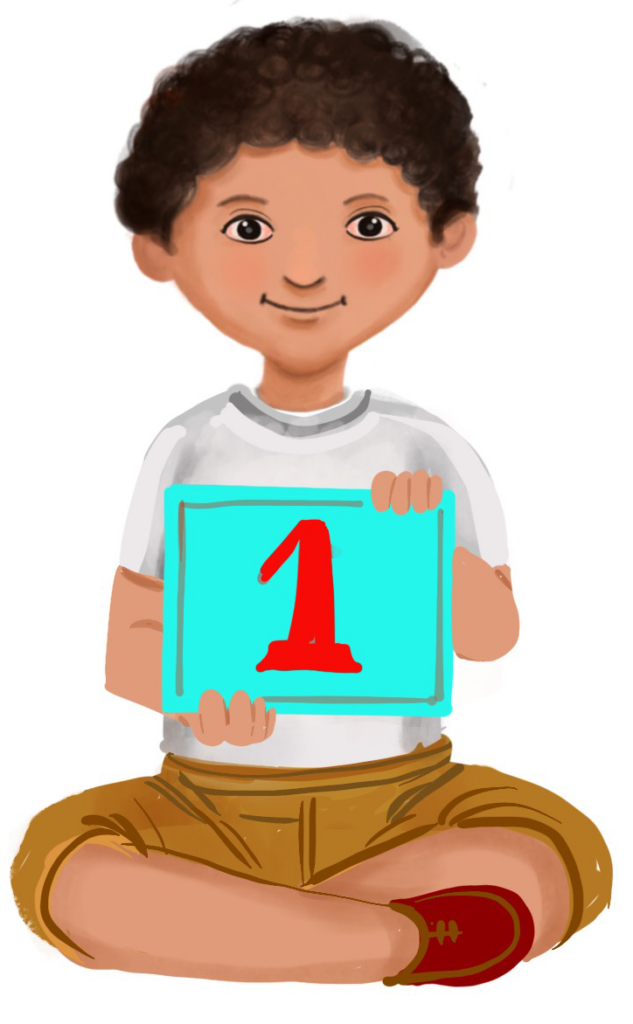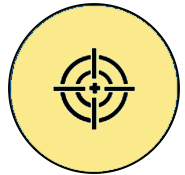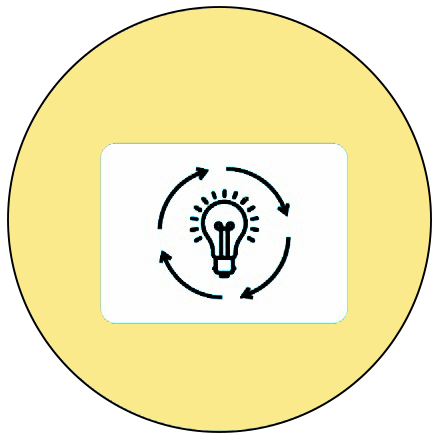
Measurement
Week 2 – Measure Weight
Learning Outcome
Compare two objects in terms of their weight and place them in order from light to heavy objects or vice versa.
 Objective
Objective
Children will be able to identify heavy and light objects.
 Prerequisites
Prerequisites
Children can identify day-to-day objects around them.
 Pre-teach Vocabulary
Pre-teach Vocabulary
Big, small, heavy, light, compare, guess
Introduction: Revision – Measuring Length
The teacher could begin by a recap summary of measuring length by stating –
- Last week we learned about measuring the length of objects using nonstandard objects.
- Length is the term used for identifying the size of an object or distance from one point to the other
- While measuring the approximate length of objects
- We can choose informal objects like pencil, eraser etc.;
- We should not overlap or leave space in the measuring tool;
- We should measure from end to end.
And then the teacher proceeds to introduce the concept of measuring weight.
Materials required:
- Objects – Potatoes, chillies, pencils, crayons, school bag, tiffin box, Pencil box [any other objects available in and around the classroom]
- Flashcards with big and small objects
- Flash card showing the heavy and light objects (Without answers)
The teacher can call a child, give an apple and a tomato, and ask the child to hold the apple in one hand and the tomato in the other hand and ask the child to say aloud which is heavier. Two objects – one heavy and one light, can be given to a few more children [book and pencil, school bag and pencil case, notebook and pen, etc.] After guiding the children to feel, compare, and guess the heavy and light objects, the teacher can ask the children which is heavier – a handful of sugar or a handful of cotton wool. Some say it’s the sugar, and some say it’s the cotton wool.
Teacher: Alright, now let me tell you a story.
The Naughty Doxie
In a small town, Mukund, a trader, had a donkey named Doxie who helped him carry goods to the market. Doxie had to cross a river every day with heavy loads. One day, Mukund, after selling his goods, returned with a sack of salt on the donkey’s back. As they crossed the river, Doxie slipped and fell into the river, and when he got up, he noticed the sack felt lighter.
The salt had dissolved in the water, making the sack easier to carry. The next day, Mukund bought another sack of salt. Doxie, remembering what happened before, deliberately fell into the river again, making the load lighter. Mukund figured out Doxie’s trick.
To teach Doxie a lesson, Mukund put a huge sack of cotton wool on Doxie’s back the following day. When Doxie fell into the river, the cotton wool absorbed the water and became very heavy.
Doxie realised the mistake and decided not to repeat it. Mukund understood Doxie had learned his lesson. From then on, Doxie carried his loads carefully. Mukund was happy with Doxie and gave him extra food each day. The teacher can explain that heavy objects are not always big, and light objects are not always small.
For example, a peacock feather is big but light, while an iron nail is small but heavy. The teacher can show this with objects or flashcards to help students understand.
Video: The Naughty Doxie – Coming soon
ISL Video: The Naughty Doxie – Coming soon
After showing the video and the flashcards the teacher proceeds to engage the students in measuring the weight activities.
Activity 1: Heavy or Light?
Objective: Look at the objects and identify heavy and light objects.
Importance of the activity for children:
Helps in developing:
- Fine motor Skills (Holding the pencil)
- Gross motor Skills (Sit erect, bend and write)
- Cognitive Skills (Problem solving, focus, evaluation, and identifying the heavy and light objects)
- Social Skills (Waiting for their turn to submit)
- Language Skills (Concept formation like ‘Heavy’ and ‘Light’)
Resources required:
Printable worksheet with appropriate images and a place for writing the answer.
Setting for the activity:
The activity can be done indoors.
Type of activity: Individual activity
Preparation of activity:
Make sure that each child gets one worksheet.
Procedure:
- Give each child one worksheet.
- Give clear instruction as to how to answer.
Role of the teacher: Demonstrator, observer and facilitator.
Observations:
Observe the activity to check if the children are able to compare the objects given in the image and identify heavy and light objects.
The teacher can note down his or her observations and guide the children accordingly.
Suggested Variations:
- Instead of giving the worksheet, the teacher can display two objects on the table at first and ask the children to identify heavy objects (10 sets can be displayed)
- Then another 10 sets of objects can be displayed, and children can be asked to identify light objects.
- The correct answer can be told after the display of each set of objects for immediate reinforcement.
- Some objects displayed can be of small size but heavy, and some may be large in size but light in weight to drive home the point that size and weight are not always connected.
Conclusion:
Children would be able to look at the picture or look at objects displayed, compare the objects, and guess the heavy and light objects.
Worksheet: Write H for ‘Heavy’ objects and L for ‘Light’ objects – Coming soon
Worksheet: Write H for ‘Heavy’ objects and L for ‘Light’ objects (Enlarged) – Coming soon
Video: Heavy or Light? – Coming soon
ISL Video: Heavy or Light? – Coming soon
Activity 2: Hunt and Have Fun
Objective:
To Look at the objects and identify heavy and light objects.
Importance of the activity for children:
Helps in developing:
- Fine motor Skills (Holding the objects, hand-eye coordination)
- Gross motor Skills (Run around)
- Cognitive Skills (Problem solving, concentration)
- Social Skills (Waiting for the turn to show the objects, appreciating others)
- Language Skills (Concept formation like ‘Heavy’ and ‘Light’)
Resources required:
A few heavy and light objects scattered around the area of activity.
Setting for the activity:
The activity can be done indoors or outdoors depending on the available space.
Type of activity: Group activity
Preparation of activity:
The teacher should ensure that a sufficient number of heavy and light objects are available in and around the class.
Procedure:
- Organise the class into two groups of 10 children each. [If number of children are more, the activity can be repeated with another group 10 or five children for each group.]
- The first group should collect 10 items around them, such as a pencil, lunch box, etc.
- The first group should provide one thing at a time, challenging the second group to locate a heavier object than the one shown. For example, show a pencil and ask the other group to find a heavier thing than the pencil.
- The second group can show a book or any other object heavier than the pencil shown.
- The teacher can check and confirm the correctness of the answer.
- Encourage students by asking them to cheer for correct replies.
- After the first group finishes displaying ten items, the second group resumes the game.
- The second group should collect 10 items around them.
- Show one object at a time and challenge the first group to find a lighter alternative. For example, display a school bag and ask the first group to discover a lighter object than the school bag.
- To prevent excessive noise and exhibition of items by group members, the teacher can allow discussion but select one member from each group to demonstrate the objects and show a response.
Role of the teacher: Demonstrator, observer and facilitator.
Observation:
The teacher can observe the exercise to assess children’s teamwork and cooperation skills.
Handling things and guessing their weight helps children understand the concept of ‘heavy and light.’
Suggested variation in the activity:
Instead of asking one group to find an object heavier than the one shown, both groups can carry a variety of objects with them. The first group should present an object and request the other group to present a heavier and lighter object than the one exhibited from their collection of items. Once completed and verified, the second group should show an object and request that the first group show a heavier and lighter object from their collection. The game can be continued till all the group members get a chance to play.
Conclusion:
Children can distinguish and compare heavy and light objects. Children will also develop teamwork skills.
Assessment:
Circle heavy and light objects.
Assessment: Worksheet – Circle the heavy objects – Coming soon
Assessment: Worksheet – Circle the heavy objects (Enlarged) – Coming soon
Assessment: Worksheet – Circle the light objects – Coming soon
Assessment: Worksheet – Circle the light objects (Enlarged) – Coming soon
Check list for teacher:
| Activity | Yes | No | Sometimes |
| Children can: | |||
| Identify big and small objects | |||
| Identify heavy and light objects | |||
| Guess the weight of objects | |||
| Understand that the size and weight of objects are not always directly connected | |||
| Complete the activity in the given time | |||
| Do the activity independently | |||
| Express through verbal articulation, actions, expressions or gestures | |||
| Enjoy teamwork, appreciates others, and is willing to learn from others |
Home Activity
Arrange the objects in descending order of weight and write the correct order of alphabets in the answer column.
Fun Activity: Word Wall -Arrange in descending order of weight – Coming soon
Cross-Curricular Connection:
- In Art class:
- Outline a list of large (heavy) and tiny (light) objects.
- Children can colour heavy objects in one colour and light objects in another colour.
- Images of large or tiny objects can be provided. Children may be asked to draw the same image in the opposite size. For example, if the image of a large pencil is given, the child should draw a small one. There should be enough space to draw the opposite size image.
- In Math class:
- Children can be given same size play objects, say 20 toy cars
- Tell the children to organise the toy cars in two groups in such a way that one group of toy cars is heavier than the other.
- Then ask the children to count how many toy cars are in the heavy group and how many in the light group
- This activity can develop their counting skills
Adaptations for addressing learner variability: Adaptations and strategies – Coming soon
Teacher Resource Document
| Source and Attribution of images: All images used in the above Assets and Aids are originally created. |
| This digital material has been developed by the Sri Sathya Sai Vidya Vahini Inclusive Education Project, a unit of Sri Sathya Sai Central Trust, Prasanthi Nilayam, as a collaborative offering in the service of our nation. |